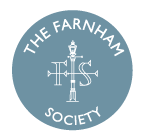Farnborough Airfield
By Mike Bryan
Farnborough Airfield’s owner-operators have plans for expansion of flying, and earlier this year ran a consultation in collaboration with the Civil Aviation Authority (CAA). Details are available on the website http://www.consultation.tagfarnborough.com.
This is not about tinkering with flight-paths for little noticeable difference. It’s about setting the principles for potential massive expansion of Farnborough, perhaps as a passenger airport using predominantly larger and noisier aircraft. This is very significant to Farnham residents’ quality of life in the long term.
Farnborough Airfield is owned and run by TAG Aviation, a specialist provider of business-jet facilities. Airspace operations and control near Farnborough are complex. Although there were only 23,000 movements in 2012, TAG already has permission for up to 50,000 aircraft movements per year at Farnborough.
TAG briefed Farnham residents at Sandy Hill on 23 April that they hope to expand operations towards the 50,000 limit by 2019. But their strategy for Farnborough development runs out in 2019. Broadly, if they can’t double the volume of business jet activity in the next 5 years, commercial pressures could lead them to sell the airfield for commercial airline operations, in which role it could service London.
At page B22 of the Consultation papers: ‘CAA guidance for airspace change does not provide a method for assessing tranquillity. … You may wish to consider the potential effect on tranquillity when providing feedback.’ From a Farnham perspective, my own analysis of the consultation papers led to 4 main points.
Significant to residents of Folly Hill, Sandy Hill and Upper Hale: proposals for flight arrivals to Farnborough Runway 06 (at Figure B10) include authorising flight below 1000 ft (above mean sea level; amsl) from the Folly Hill and Odiham Road junction, where the ground is approximately 600 ft high. That implies some aircraft on north-easterly approach to Farnborough flying at 400 ft above ground in that area. That frightening prospect is unnecessary and unwanted.
Secondly, there is no apparent good reason for allowing flight between approximately 700 and 1700 ft in the area above central Farnham between Rowledge, Wrecclesham, Dippenhall, Upper Hale, Hale, Runfold, Compton and The Bourne (displayed on Figure B10 as 1000-2000ft amsl). That is unnecessary and unwanted. Establishing a protection zone around those areas would avoid apparent disregard for Farnham’s population centre.
Thirdly, in order to shorten ground tracks, reduce CO2 emissions and reduce noise footprints, flight arrivals from the north-west towards the predominantly used Runway 24 (at Figures B11 and E2) should primarily route direct to the start point for the final turn rather than to a runway-parallel holding leg. Then any multiple arrivals could be separated by fanning them all out to the right (ie making them join the holding orbit earlier, as currently depicted and proposed).
Finally, the consultation did not specify details of proposed noise abatement procedures, which could significantly reduce the impact of increased flying activity at Farnborough. The plans do not include maximum power settings related to aircraft altitude and distances from take-off. This is routine for airports in city areas but has not – yet – been included as consideration for local residents here. That omission must be corrected and there should be further public consultation in that regard.
The closing date for public comments was Monday 12 May, and the Farnham Society commented before that date. A first report was published in August summarising responses to the consultation and recording that responses were predominantly negative. The report can be seen on the website www.consultation.tagfarnborough.com/consultation-document.
A further report will be published in the first quarter of 2015, giving more details of proposals under consideration following the consultation.
